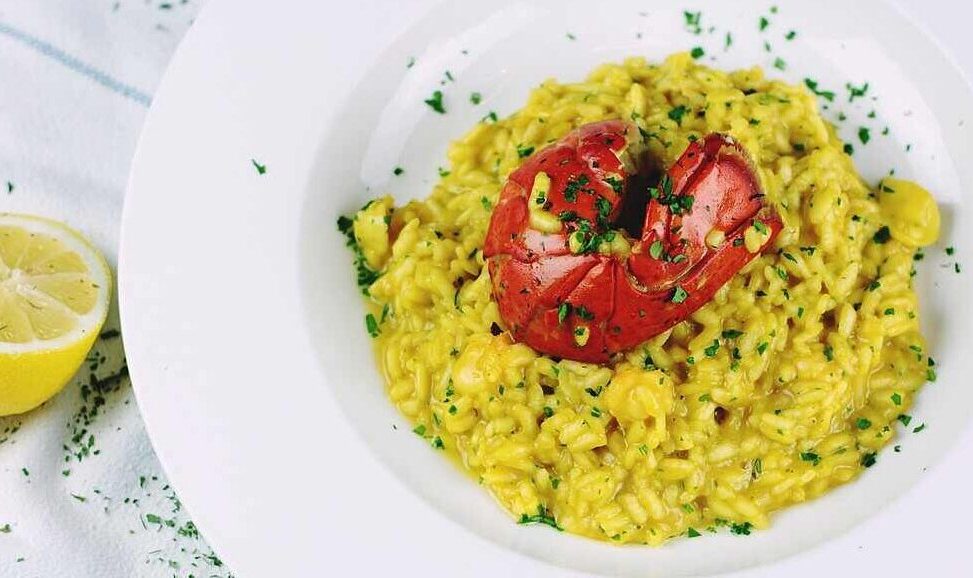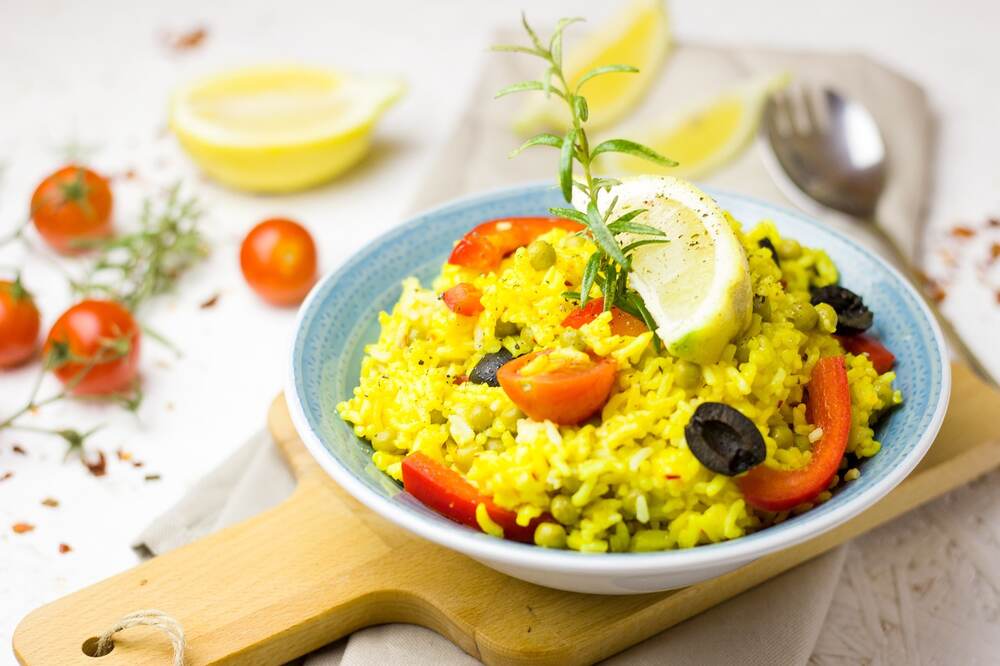Introduction About Yellow Rice
In the journey for powerful weight loss procedures, people frequently investigate different dietary decisions. Yellow rice is one option that has caught people’s attention. Famous for its lively shade and particular flavor, yellow rice is a well-known dish in many societies. In any case, does it hold the way to shedding those additional pounds? We will discuss the nutritional benefits of yellow rice and how it might help you lose weight in this article.
Is Yellow Rice Good for Losing Weight?
Yellow rice on its own is not a magic bullet for losing weight. While it contains fundamental supplements like B nutrients and fiber, its effect on weight loss relies upon by and large dietary propensities. Integrating yellow rice as a component of a reasonable, calorie-controlled diet can be helpful. However, consuming too much of it or combining it with high-calorie ingredients may make it difficult a balance life weight loss efforts. For successful weight management, it is essential to focus on a variety of nutrient-dense foods, portion control, and regular physical activity. Conference with a medical care proficient or an enlisted dietitian can give customized direction in light of individual well-being needs.
Is Yellow Rice Good For You?
Is yellow rice healthy, Yes It is frequently advanced with fundamental supplements like iron and B nutrients, giving energy and supporting general wellbeing. Also, the yellow tone is in many cases accomplished through the consideration of turmeric, which contains curcumin, known for its calming and cancer prevention agent properties. Notwithstanding, the general well-being of yellow rice relies upon the fixings and planning techniques. It may have a better nutritional profile if it is made with whole grain or brown rice. As a feature of a decent eating routine, consolidating yellow rice with some restraint can add to different supplement consumption, yet taking into account the general setting of one’s diet is significant.
How Many Calories In Yellow Rice
The calorie content of yellow rice can differ in view of fixings and serving size. Overall, one cup of cooked yellow rice gives around 200 calories. Be that as it may, it’s urgent to really take a look at bundling or recipes for exact data, as various brands and planning techniques might yield marginally unique carbohydrate contents. Moreover, factors like added fats or flavors can influence the general calorie content.
Understanding Yellow Rice

Yellow rice is a dish portrayed by its brilliant variety, got from the consideration of turmeric or saffron in the cooking system. The essential fixing is normally white rice, however, varieties might incorporate different sorts, for example, basmati or jasmine rice. The expansion of flavors gives a magnificent taste as well as presents potential medical advantages.
Nutritional Composition
To assess the appropriateness of yellow rice for weight loss, looking at its wholesome composition is pivotal. One cup of cooked yellow rice contains roughly 200 calories, making it a moderate wellspring of energy. The dish is low in fat and cholesterol, which lines up with dietary suggestions for weight the executives.
Turmeric’s Role
The key part liable for the yellow variety in the rice, turmeric, is something beyond a flavor. Curcumin, the dynamic compound in turmeric, has been the subject of various examinations for its potential medical advantages. Among its presumed properties is the capacity to upgrade digestion and help in weight loss. In any case, the centralization of curcumin in yellow rice probably won’t be just about as high as in turmeric enhancements or concentrates.
Fiber Content
The consumption of foods high in fiber is an essential component of any diet designed to lose weight. Fiber advances satiety, diminishing in general calorie admission and supporting weight the board. Yellow rice, similar to its white partner, needs critical fiber content. To upgrade the potential weight loss benefits, matching yellow rice with fiber-rich vegetables or integrating it into a fair eating routine is fitting.
Glycemic Index Consideration
The glycemic record (GI) measures how rapidly a specific food raises glucose levels. Because they provide a longer-lasting release of energy, foods with a lower GI are generally regarded as better for weight management. On the GI scale, yellow rice is in the moderate range, indicating that it has a moderate effect on blood sugar levels. Notwithstanding, matching it with protein, vegetables, or solid fats can assist with moderating its glycemic influence.
Portion Control
Yellow rice can be a part of a healthy diet, but only in moderation. Controlling part measures guarantees that you partake in its flavors without overburdening on calories. Joining it with lean proteins, vegetables, and sound fats makes a balanced dinner that supports weight loss objectives.
Cultural Variations
Yellow rice can be prepared in a variety of ways, and it is a common ingredient in many cuisines. Diverse cultural approaches can offer alternative nutritional benefits as well as a diverse culinary experience. For example, Spanish yellow rice might contain fixings like tomatoes and ringer peppers, adding nutrients and cell reinforcements to the dish.
Carbohydrates For Sustained Energy
Yellow rice is primarily a carbohydrate-rich food that gives the body an easily accessible energy source. While starches are fundamental, the critical lies in segment control to keep away from abundance calorie utilization.
Protein: A Building Block for Weight Loss
While yellow rice is definitely not a critical wellspring of protein, joining it with protein-rich food varieties can make a balanced and fulfilling dinner. Protein is necessary for maintaining muscle mass and can help you feel full, reducing the likelihood of overeating.
Is Yellow Rice Fattening
Yellow rice, similar to any rice, essentially comprises carbs. The amount of food, how it is prepared, and the ingredients that go with it all have an impact on nutrition. While rice gives energy, unreasonable utilization without a fair eating regimen and exercise might add to weight gain. The yellow color is frequently caused by spices like turmeric, which may have health benefits.
Conclusion
Nonetheless, it ought to be eaten with some restraint and as a component of a more extensive dietary technique that incorporates a scope of supplement thick food varieties. Likewise with any weight loss approach, talking with a medical care proficient or nutritionist is prudent to guarantee that singular dietary necessities and objectives are met.
FAQ
Is Yellow Rice Gluten Free
According to the ingredients used, yellow rice can be gluten free. Conventional yellow rice made with simply rice, turmeric, and different flavors is ordinarily sans gluten. Notwithstanding, some financially bundled or café arranged yellow rice might incorporate added substances or flavorings that contain gluten. It’s vital to actually take a look at the item’s name or ask about the fixings to guarantee sans-gluten status. Furthermore, cross-tainting during planning in cafés can be a worry. People with gluten responsiveness or celiac sickness ought to practice alert and pick checked without gluten items or get ready yellow rice at home without gluten fixings.
Is Yellow Rice Good For Diabetics
Yellow rice, while tasty and nutritious, may not be the ideal decision for diabetics because of its high sugar content. The starches in rice can raise glucose levels, possibly presenting difficulties for those overseeing diabetes. Because of their lower glycemic indexes, cauliflower rice or quinoa might be a better choice.
Is Yellow Rice Better Than White Rice
The dietary prevalence of yellow rice over white rice relies upon the particular kind and brand. Due to the addition of spices like turmeric, yellow rice typically contains more nutrients like vitamin A. Be that as it may, taking into account individual dietary necessities and preferences is essential. While yellow rice might offer added supplements, white rice isn’t intrinsically unfortunate and can be important for a fair eating regimen. Factors like individual taste, social impacts, and well-being contemplations ought to direct the decision between yellow and white rice, guaranteeing a balanced way to deal with sustenance custom-made to individual necessities.

